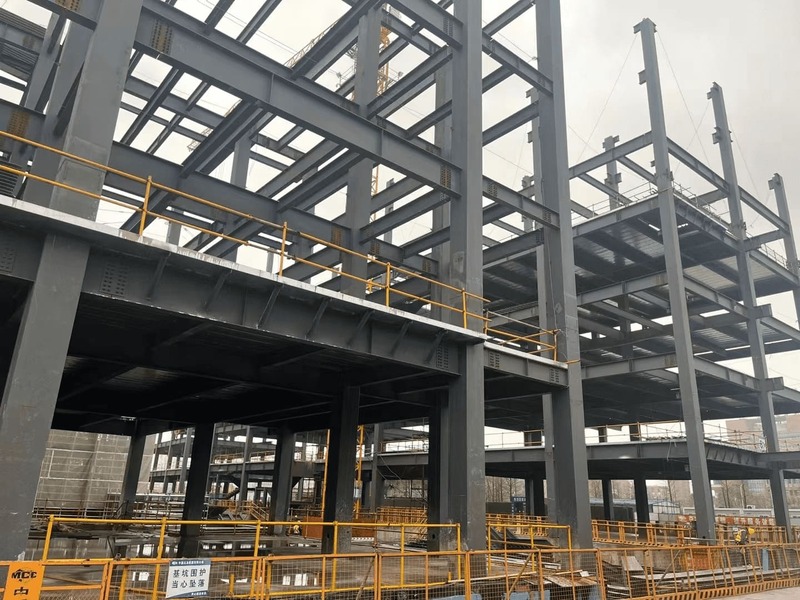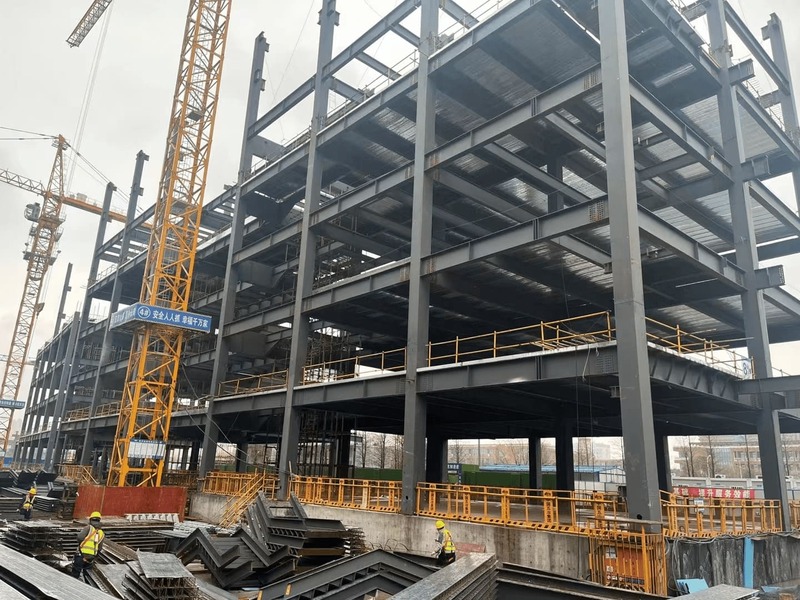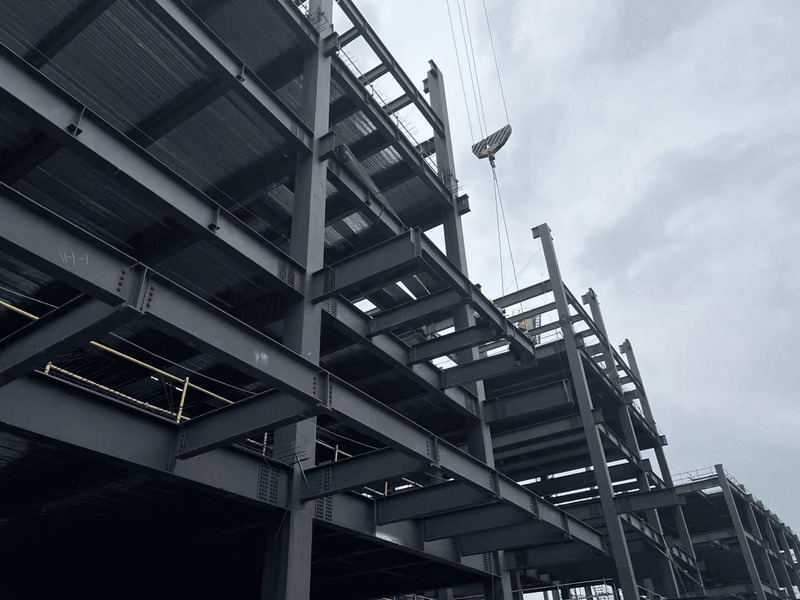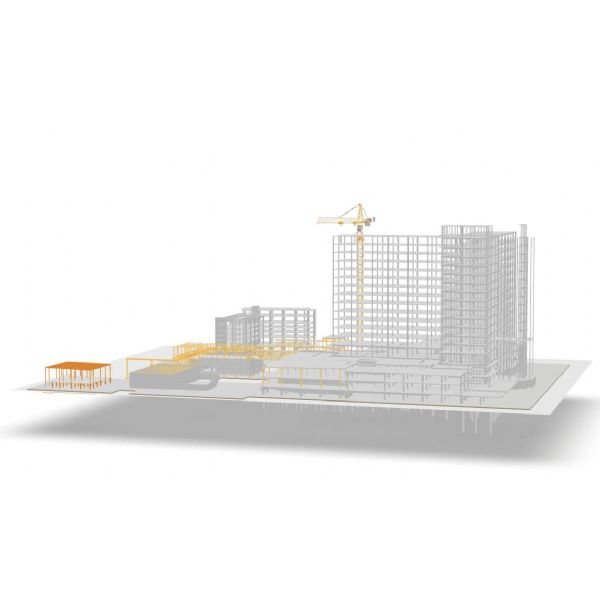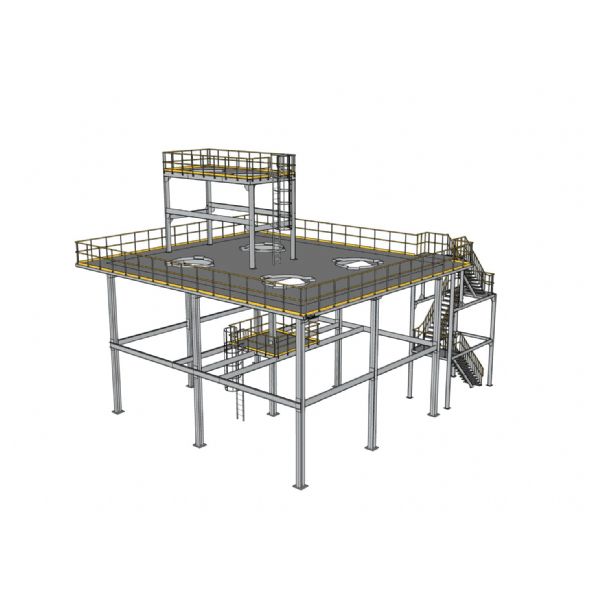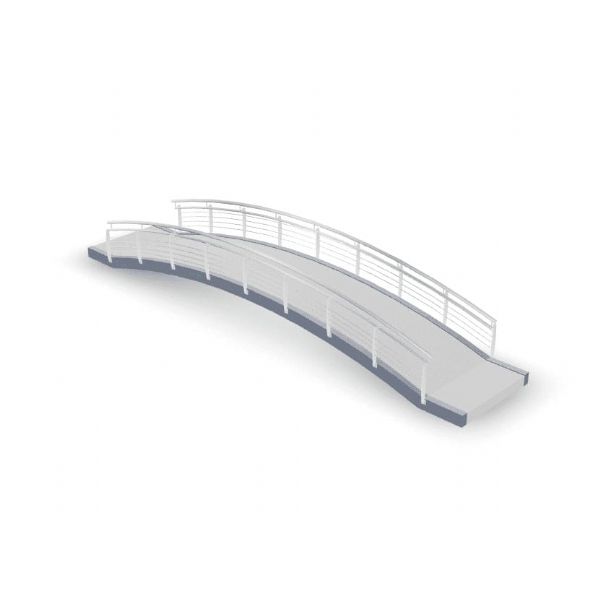Office Building Project Details
The office building at Shanghai International Business Park (SIMP) represents a milestone in the development of modern corporate infrastructure in China. Designed and constructed by XTD Steel, this project showcases innovation, durability, and advanced engineering. Completed in 2022, the complex spans approximately 64,000 square meters and was developed to meet the growing demand for world-class business environments in Shanghai.
At the heart of the design lies the application of a steel structure office building, combining the strength of steel with the versatility of concrete high-rise construction. The project required 4,200 tons of high-quality steel, ensuring a structure that is not only safe and sustainable but also adaptable to the evolving needs of modern enterprises for decades to come.
This landmark project reflects Shanghai’s vision of becoming a global business hub while demonstrating XTD Steel’s expertise in delivering large-scale commercial office buildings that balance structural strength, functionality, and architectural excellence.
The Role of Steel Structure Office Building in Modern Business Architecture
Why Steel Structures Are Ideal for Office Buildings
Steel is the backbone of modern commercial architecture, and its advantages are especially significant for office building projects. A steel structure office building provides:
- High durability: Capable of withstanding heavy loads, wind, and seismic forces.
- Design flexibility: Enables large, column-free spaces ideal for open offices, meeting zones, and innovation labs.
- Faster construction timelines: Ensures rapid project delivery, critical in today’s fast-moving business landscape.
- Adaptability for future expansion: Office spaces often require reconfiguration, and steel allows seamless interior or vertical modifications.
Application at SIBP
For the Shanghai International Business Park, these structural advantages were central to adopting a steel-concrete high-rise system. The result is a high-end office building designed to meet present corporate needs while remaining flexible for future technology integration and workspace evolution.
Architectural and Functional Design
Above Ground Facilities
The office tower’s above-ground floors are organized to support a wide range of business operations, including:
- Corporate offices and co-working spaces
- Conference and meeting halls
- Executive suites and innovation centers
- Retail and service zones
- Training and recreational areas
The use of a steel structure office building allowed architects to design wide, open-plan floors that enhance productivity, promote collaboration, and improve space utilization efficiency.
Underground Infrastructure
Beneath the building, a multi-level underground facility provides essential support systems. The lower floors include:
- Mechanical, electrical, and data centers
- Storage and maintenance areas
- Parking zones for staff and visitors
By housing critical utilities and parking underground, the project maximizes above-ground space for green plazas and open walkways—contributing to a sustainable and employee-friendly urban office environment.
The underground construction features robust ventilation, fire-resistant materials, and advanced circulation systems to ensure safety, accessibility, and operational continuity. The steel framework enhances load-bearing capacity, making it suitable for heavy machinery and vehicular movement without compromising building stability.
Engineering Excellence and Construction Process
Use of 4,200 Tons of Steel
The project utilized 4,200 tons of premium structural steel to ensure the building’s long-term resilience and safety. This extensive use of steel underscores both the scale and precision of the engineering required for modern office building construction.
Steel Structure Concrete High-Rise Design
The steel structure concrete high-rise model integrates the flexibility of steel with the strength of concrete, offering:
- Superior seismic and wind resistance
- Fire safety and enhanced durability
- Efficient load distribution for office utilities and equipment
This hybrid system ensures structural stability, cost efficiency, and future scalability—key attributes of next-generation business architecture.
Safety and Sustainability in Office Construction
Safety First
The steel structure office building complies with international standards of safety and reliability. Key features include:
- Seismic-resistant framing systems
- Fireproof coatings and materials
- Multiple evacuation routes and emergency power backups
Commitment to Sustainability
Sustainability was central to this project’s design and execution. Key measures include:
- Energy-efficient HVAC and smart lighting systems
- Eco-friendly and recyclable materials
- Advanced water and waste management systems
- Integration of rooftop green areas and solar technology
These features reduce the carbon footprint while ensuring long-term operational savings.
Human-Centered Design Philosophy
Comfortable and Productive Environments
The office building prioritizes user experience by maximizing daylight, improving ventilation, and incorporating flexible interior layouts. Green terraces, collaborative zones, and panoramic views foster employee well-being and creativity.
Accessibility and Efficiency
Barrier-free access, smart elevators, and clear zoning enhance circulation for employees and visitors. Efficient spatial organization allows companies to customize office layouts according to their operational needs.
Contribution to Shanghai’s Business Landscape
Expanding Corporate Capacity
The SIBP project enhances Shanghai’s capacity to host multinational headquarters, startups, and research centers. By providing a technologically advanced and sustainable workspace, it strengthens the city’s position as a leading financial and innovation hub.
Benchmark for Future Office Building Design
As one of XTD Steel’s flagship projects, the Shanghai International Business Park sets a new benchmark for office building construction. Its combination of strength, flexibility, and green performance exemplifies modern architectural excellence.
XTD Steel’s Role in Office Building Projects
Expertise in Complex Commercial Developments
With decades of experience, XTD Steel has established itself as a leader in the design and delivery of steel structure office buildings. The company has completed numerous high-rise towers, industrial parks, and corporate campuses that demand precision engineering and modern aesthetics.
Reputation for Innovation
Innovation defines every XTD Steel project. Using advanced digital modeling tools such as Building Information Modeling (BIM), XTD ensures accuracy in design, resource optimization, and efficient construction timelines. The Shanghai International Business Park stands as proof of how innovation and engineering excellence combine to create world-class commercial buildings.
Future Outlook for Steel Structure Office Buildings in Shanghai
Smart Office Integration
Future office buildings in Shanghai will incorporate smart systems—AI-driven management, real-time monitoring, and digital automation. The flexibility of steel structures makes them the ideal foundation for these technologies.
Sustainability and Green Development
In alignment with China’s green city goals, steel structure office buildings will continue to adopt renewable energy systems and recyclable materials to reduce environmental impact.
Adaptability for the Future
Corporate requirements evolve rapidly, and steel structures enable reconfiguration, vertical expansion, and interior redesign without compromising structural stability.
The Shanghai International Business Park project is a landmark achievement that redefines the standards of office building construction in China. With 64,000 square meters of workspace supported by 4,200 tons of steel, it exemplifies the synergy between engineering strength, sustainability, and design innovation.
Completed in 2022, this project reinforces XTD Steel’s reputation as a trusted builder of high-performance office buildings that meet global standards and anticipate the needs of tomorrow’s workforce.

